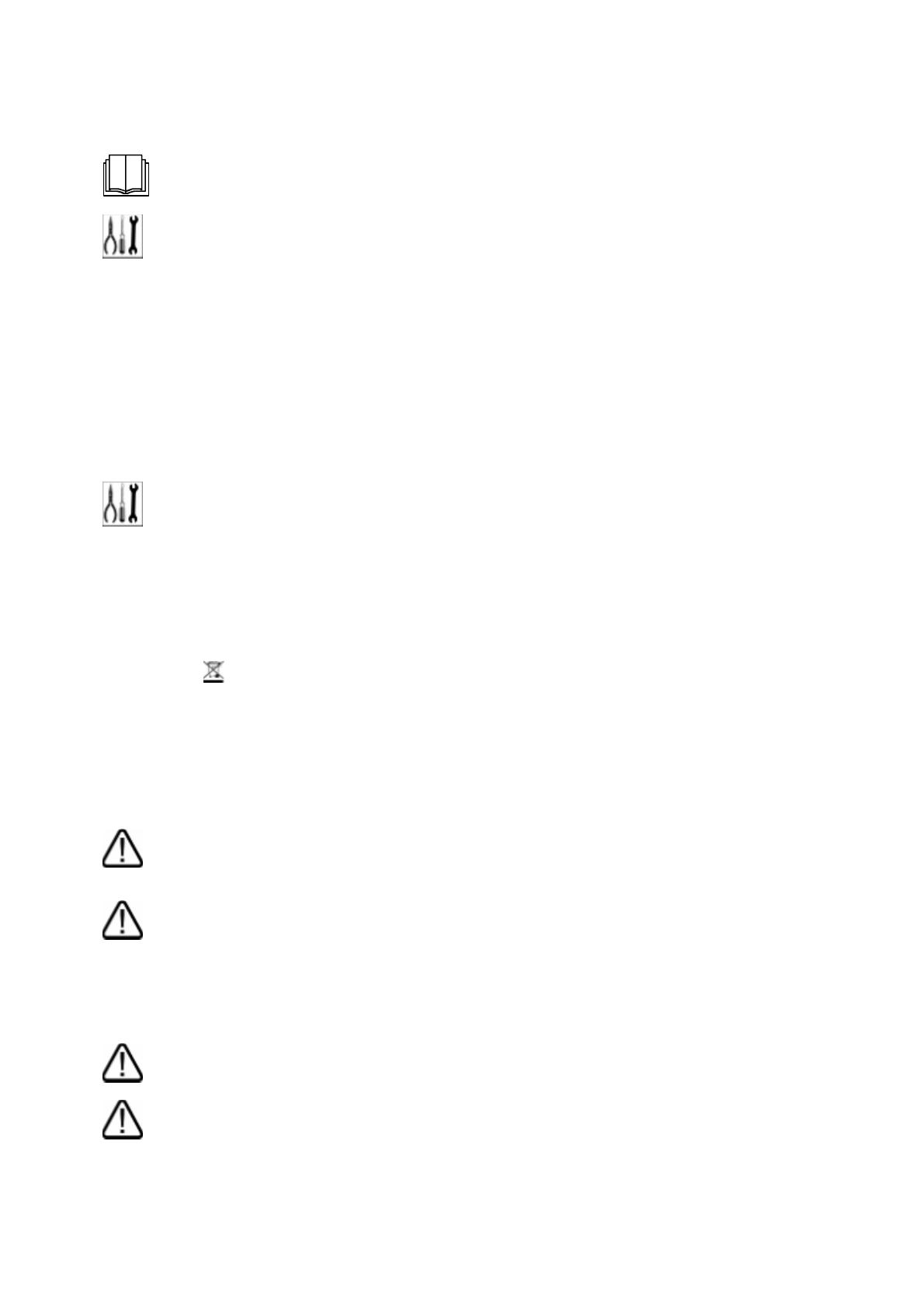
3
1 AVERTISSEMENTS CONCERNANT LA SECURITE ET L’UTILISATION
LE LAVE-VAISSELLE EST EXCLUSIVEMENT DESTINE A UN USAGE COLLECTIF ET IL DOIT ETRE
UTILISE PAR UN PERSONNEL AUTORISE. IL EST PREVU POUR LE LAVAGE DE LA VAISSELLE
(ASSIETTES, TASSES, BOLS, PLATS, COUVERTS) ET SIMILAIRES DANS LE SECTEUR DE LA
GASTRONOMIE ET DE LA RESTAURATION COLLECTIVE. IL EST CONFORME AUX NORMES
INTERNATIONALES DE SECURITE ELECTRIQUE ET MECANIQUE (CEI-EN-IEC 60335-2-58/61770) ET DE
COMPATIBILITE ELECTROMAGNETIQUE (CEI-IEC-EN 55014-1/-2, 61000-3;4, 50366).
LE FABRICANT DECLINE TOUTE RESPONABILITE RELATIVE AUX DOMMAGES CAUSES AUX
PERSONNES OU AUX CHOSES ET DUS AU NON RESPECT DES INSTRUCTIONS CONTENUES DANS
LA PRESENTE NOTICE, A UNE UTILISATION IMPROPRE, A L’ALTERATION NE SERAIT-CE QUE D’UNE
SEULE PARTIE DE L’APPAREIL ET A L’UTILISATION DE PIECES DE RECHANGE NON ORIGINALES.
CET APPAREIL EST MARQUE CONFORMEMENT A LA DIRECTIVE EUROPEENNE 2002/96/EC, WASTE
ELECTRICAL AND ELECTRONIC EQUIPMENT (WEE).
EN ASSURANT L’ELIMINATION CORRECTE DE CE PRODUIT, L’UTILISATEUR CONTRIBUE A PREVENIR
LES CONSEQUENCES NEGATIVES POTENTIELLES POUR L’ENVIRONNEMENT ET LA SANTE.
LE SYMBOLE
PRESENT SUR L’APPAREIL OU DANS LA DOCUMENTATION QUI L’ACCOMPAGNE
INDIQUE QUE CE PRODUIT NE DOIT PAS ETRE TRAITE COMME UNE ORDURE MENAGERE MAIS QU'IL
DOIT ETRE REMIS A UN CENTRE DE COLLECTE APPROPRIE POUR LE RECYCLAGE DES APPAREILS
ELECTRIQUES ET ELECTRONIQUES.
ELIMINER L’APPAREIL CONFORMEMENT AUX REGLEMENTATIONS LOCALES CONCERNANT LE
TRAITEMENT DES DECHETS. POUR TOUTE AUTRE INFORMATION CONCERNANT LE TRAITEMENT, LA
RECUPERATION ET LE RECYCLAGE DE CE PRODUIT, S’ADRESSER AU SERVICE LOCAL COMPETENT
DE COLLECTE DES ORDURES MENAGERES OU LE MAGASIN DANS LEQUEL LE PRODUIT A ETE
ACHETE.
LA PRESENTE NOTICE EST PARTIE INTEGRANTE DU LAVE-VAISSELLE ; IL FAUT
TOUJOURS LA CONSERVER SOIGNEUSEMENT A PROXIMITE DE L’APPAREIL.
LA MISE EN PLACE, LES RACCORDEMENTS, LA MISE EN SERVICE, L’ELIMINATION DES
INCONVENIENTS ET LE REMPLACEMENT DU CABLE D’ALIMENTATION DOIVENT ETRE
EXECUTES PAR UN PERSONNEL QUALIFIE.
LA CONNEXION DE TERRE SELON LES MODALITES PREVUES PAR LES NORMES DE
SÉCURITÉ DE L’INSTALLATION ELECTRIQUE EST OBLIGATOIRE. SI LE CABLE
D’ALIMENTATION EST ENDOMMAGE IL DOIT ETRE REMPLACE PAR LE FABRICANT, SON
SERVICE APRES VENTE OU DES PERSONNES DE QUALIFICATION SIMILAIR AFIN D’
EVITER UN DANGER
NE PAS INTRODUIRE DE SOLVANTS TELS QUE L’ALCOOL OU LA TEREBENTHINE QUI
POURRAIENT PROVOQUER UNE EXPLOSION. NE PAS INRODUIRE DE VAISSELLE SALE
DE CENDRE, CIRE OU VERNIS.
NE JAMAIS UTILISER LE LAVE-VAISSELLE OU SES PARTIES COMME ECHELLE, SUPPORT
OU SOUTIEN POUR LES PERSONNES, CHOSES OU ANIMAUX.
LE FAIT DE S’APPUYER OU DE S’ASSEOIR SUR LA PORTE OUVERTE DU LAVE-VAISSELLE
POURRAIT ENTRAINER LE BASCULEMENT DE CE DERNIER ET DONC UN GRAVE DANGER
POUR LES PERSONNES.
NE JAMAIS LAISSER LA PORTE DU LAVE-VAISSELLE OUVERTE CAR ELLE POURRAIT
CAUSER UN RISQUE DE TREBUCHEMENT
NE PAS BOIRE L’EAU RESIDUELLE EVENTUELLEMENT PRESENTE DANS LA VAISSELLE
OU DANS LE LAVE-VAISSELLE A LA FIN DU PROGRAMME DE LAVAGE.
L’APPAREIL N’EST PAS PREVU POUR ETRE UTILISE PAR DES MINEURS OU DES
PERSONNES AYANT DES CAPACITES PHYSIQUES, SENSORIELLES OU MENTALES
REDUITES, MANQUANT D’EXPERIENCE ET DE CONNAISSANCE. L’UTILISATION DE
L’APPAREIL EST AUTORISE A CES PERSONNES EXCLUSIVEMENT SOUS LA
SURVEILLANCE D’UNE PERSONNE RESPONSABLE DE LEUR SECURITE
















